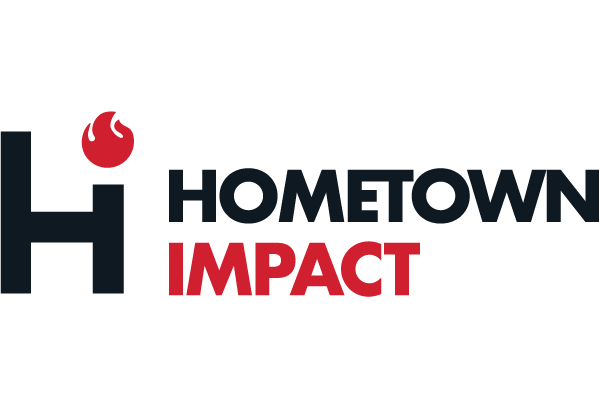Mastering Building Links for SEO: Smart Strategies for Outstanding Results
Imagine a bustling city with a maze of streets and alleys. Websites are like these buildings, and hyperlinks are the roads connecting them. In the digital cityscape, link building is akin to city planning, connecting relevant sites to enhance visibility and traffic. The question is, how do you master the art of building these digital roads? This blog post will guide you through the process of building links for SEO, highlighting the importance of quality links, revealing strategic techniques, and helping you avoid common pitfalls.
Key Takeaways
Link building for SEO is an effective strategy to increase website visibility and authority.
Quality links are essential for successful search engine rankings, with strategies such as content creation, guest blogging, leveraging resource pages, and influencer outreach being key components of a link-building strategy.
Avoid common pitfalls by focusing on quality rather than quantity in link-building efforts and avoiding automated techniques. Internal linking should also be included in the overall strategy.
Understanding the Power of Link Building for SEO
Illustration of a network of interconnected web links
The realm of Search Engine Optimization (SEO) can appear expansive and complex, with fluctuating algorithms and streams of keywords. Amidst this complexity, link building emerges as a significant strategy, directing your site toward enhanced search engine visibility. In essence, link building for SEO is about crafting digital bridges that lead to your website, boosting your online presence and authority.
But it’s not just about building bridges haphazardly. The type of bridge matters. Imagine a city connected by sturdy, well-planned bridges. Traffic flows smoothly, and people can easily navigate the city. Now imagine the same city but with hastily built, rickety bridges. Traffic is slow, and people are hesitant to use these bridges. You should use the same approach for your website. Ensuring the application of these principles is key. Quality links are like well-planned bridges, they improve the user experience, boost your website’s authority, and, ultimately, its ranking on search engine results pages.
Why Link Building Matters
It’s not just about building bridges, but also about where these bridges lead. Consider this: Are they leading to bustling hubs of activity or desolate ghost towns? High-quality backlinks, including local and broken link building, can elevate a webpage’s search rankings, bringing in valuable traffic from bustling online hubs. These backlinks act like votes of confidence, signaling to search engines that others vouch for your content.
Not only do backlinks enhance search rankings, but they also drive targeted traffic and increase brand awareness. For local businesses, link building is like a map highlighting their location, enhancing visibility in local search results, and attracting more local customers. In essence, within SEO, link building transcends being a mere strategy to become a necessity.
The Role of Quality Links
When building bridges, we don’t just consider where they’re leading but also their structure and strength. Similarly, in link building, the quality, relevance, and authority of links play a significant role. High-quality links, much like well-structured bridges, can dramatically boost your website’s SEO performance and enhance the user experience.
Internal link building also plays a significant role, acting as road signs guiding both search engines and readers to understand the content of the linked page. The relevance of links is equally crucial, helping to assess whether other prominent websites link or refer to the content.
In the grand scheme of SEO, quality links are the pillars supporting your website’s authority and search rankings.
Essential Link Building Strategies for Success
Photo of a person creating engaging content for link-building
The complex maze of link building can appear overwhelming, but there’s no need for concern. We will shed light on some efficient link-building strategies. By adopting these techniques, you’ll not only generate more traffic to your website but also build sustainable, long-term relationships with other relevant sites.
From creating compelling content and guest blogging to leveraging resource pages and reaching out to influencers, each strategy is a road leading to the bustling city of high search engine rankings. However, it’s not just about choosing a road; it’s about understanding the landscape and knowing which path will lead you to your desired destination.
Content Creation and Promotion
Visualize a busy city square, attracted by an engaging street performer. Your content is that performer, and your audience, the crowd. Creating and promoting high-quality, shareable content can draw in natural backlinks like a crowd, enhancing search rankings. Blogging, in particular, is a powerful way to create such content and establish links naturally over time, much like a performer gaining a loyal following.
Yet, captivating content alone isn’t enough. Promotion serves to amplify your content’s reach, ensuring it stands out amidst the noise of the digital marketplace. By utilizing various channels such as social media and email marketing, you increase the chances of other websites finding and linking to your content. So, remember, content creation and promotion go hand in hand, like a street performer and his megaphone.
Guest Blogging
Illustration of a guest blogger contributing to a reputable website
Performing on a new stage may be intimidating, but it also provides access to a fresh audience. Guest blogging is akin to this concept, allowing you to gain high-quality backlinks and increase brand exposure by publishing your content on reputable websites.
Finding these stages can be challenging. But there are several resources you can use to help you. Tools like Semrush’s Backlink Gap tool can help identify topics that have generated substantial traffic for competitors but are yet to be explored on the blog you’re pitching. This way, you’re not just stepping onto a new stage; you’re delivering a performance that the audience is eager to see.
Resource Pages and Directories
Think of resource pages and directories as the city’s information hub or local guide, directing visitors to pertinent sites. These pages can prove to be advantageous for link building as they offer a chance to gain “genuine” links from reliable websites.
For local businesses, being listed in local business directories can enhance visibility and exposure. Remember, the goal is to be a part of the city map, making it easier for visitors to find you and, in turn, boosting your search rankings.
Influencer Outreach
Amidst the city’s clamor, influencers are the voices that echo. Building relationships with influential figures in your industry can lead to valuable backlinks and boost your brand’s credibility. It’s about networking, not just link-building.
Identifying these influential figures is akin to finding the right voices to amplify your brand message. By building relationships and providing value, you can leverage their reach and influence for:
Off-page SEO
Targeting a precise audience
Enhancing website credibility
Improving search rankings
Social Media Engagement
In the dynamic digital city, social media platforms act as public squares, teeming with activity and dialogue. By engaging with your audience on these platforms, you increase your brand’s visibility and attract potential backlinks.
Platforms like YouTube, Twitter, Facebook, Instagram, LinkedIn, and Pinterest are the most effective social media platforms for SEO link building. Remember, social media engagement isn’t just about broadcasting messages; it’s about starting conversations and building connections, much like a town square.
Analyzing Competitor Backlinks for Effective Link Building
Photo of a person analyzing competitor backlinks using a digital tool
In the quest for search engine ranking supremacy, comprehending your competitors’ tactics is as significant as understanding your own. By analyzing competitor backlinks, you can uncover potential link-building opportunities and optimize your SEO strategy. It’s like studying the city map to understand the most efficient routes your competitors are taking.
Nonetheless, competitor analysis involves more than just mimicry; it encompasses innovation. By understanding what strategies work for your competitors, you can:
Create similar or superior strategies
Learn from their successes and failures
Identify gaps in the market
Stay ahead of industry trends
Improve your products or services
It’s like a city planner designing more efficient roads based on existing routes.
Importance of Competitor Analysis
Understanding the importance of competitor analysis in link building is like recognizing the value of a city’s blueprint. It enables you to identify and replicate rewarding link-building opportunities, familiarize yourself with competitors’ strategies, and uncover novel opportunities.
By analyzing competitor backlinks, you can gain a wealth of valuable insights, such as:
identifying high-quality websites
understanding link-building strategies
uncovering new link opportunities
assessing link quality
Essentially, competitor backlink analysis is the blueprint for your city planning strategy.
Tools for Backlink Analysis
Just as a city planner requires appropriate tools for efficient roadway design, you need suitable tools for competitor backlink analysis. Tools like Semrush’s Backlink Analytics tool, Ubersuggest, and Moz are your drafting instruments, providing valuable insights and data to assess the progress of link-building initiatives.
These tools help to illuminate your path, revealing patterns, top-performing pages, and competitor’s ‘linkable assets.’ With these insights, you can effectively track your link-building progress and navigate your way to a stronger SEO strategy.
Gaining Insights from Competitor Backlinks
Every road in a city tells a story, and every backlink on a competitor’s site reveals a strategy. By gaining insights from competitor backlinks, you can inform your link-building strategy and improve your search rankings.
Analyzing competitor backlinks is like studying the city’s traffic patterns. It reveals:
new link building opportunities
informs link-building strategies
improves your backlink profile
identifies your competitor’s link-building tactics
Thus, it’s not just about building roads; it’s about understanding why and how they were built.
Monitoring and Tracking Your Link Building Progress
As your city expands and progresses, monitoring and tracking the development of your road networks to ensure they maintain their efficiency becomes imperative. Similarly, tracking your link-building progress ensures your strategies are yielding results and helps you identify areas for improvement.
By closely monitoring your link-building activities, you can confirm alignment with your SEO objectives. It’s like a city planner regularly inspecting the city’s infrastructure, making sure everything runs smoothly and identifying areas that need improvement.
Tools for Tracking Link Building Progress
As a city planner utilizes tools to monitor the city’s infrastructure development, you need appropriate tools to track your link-building progress. Tools like Google Analytics, Semrush, and Ahrefs are your tracking devices, providing valuable insights into your link-building progress.
These tools are like the city’s control center, providing real-time data and insights into the city’s infrastructure. They offer a range of features for tracking link building, including:
Comparing your website’s current and historical data
Analyzing competitors’ top-performing pages globally
Monitoring backlink growth or decline
Tracking progress in link-building outreach
Key Metrics to Measure Success
In city planning, success is gauged by the effectiveness of road networks, navigational ease, and citizen satisfaction. Similarly, the success of your link-building strategy can be measured by key metrics such as:
the number of backlinks
domain authority
referral traffic
search rankings
Each of these metrics is like a signpost, guiding you toward your SEO goals. They help you assess:
The strength and quality of your backlinks
The impact of your efforts on your website’s domain authority
The volume of traffic being directed to your site from other websites
Your website’s position in search engine rankings.
Common Link Building Mistakes to Avoid
Illustration of a broken link symbolizing link-building mistakes
Similar to city planning’s pitfalls like poor infrastructure and inefficient road networks, link building also has common mistakes that can hinder your SEO endeavors. By avoiding these pitfalls, you can ensure a successful and sustainable SEO strategy.
Whether it’s an emphasis on quantity over quality, dependence on automated link-building methods, or neglect of internal linking, these mistakes serve as roadblocks on the path to SEO success. They can lead to:
poor search rankings
penalties from search engines
reduced organic traffic
a compromised user experience.
Focusing on Quantity Over Quality
Consider a city filled with poorly constructed, rickety bridges. Sure, there are many bridges, but are they serving their purpose effectively? In link building, focusing on quantity over quality can lead to a similar situation, resulting in poor search rankings and reduced user experience.
Quality links are like well-constructed bridges; they connect your website to other relevant and authoritative sites, enhancing your site’s visibility and boosting your search rankings. So, it’s not about how many bridges you build, but about how well they’re built and where they lead.
Relying on Automated Link Building Techniques
In a city, the construction of roads and bridges isn’t an overnight task. It demands meticulous planning, competent labor, and time. Similarly, relying on automated link-building techniques can lead to spammy, unnatural links and potential Google penalties.
Automated link building is like using a robot to build your city’s infrastructure. While it may seem efficient in the short term, it could lead to poorly constructed roads and bridges. Instead, focus on building links organically, fostering relationships with other websites, and providing valuable content to your audience to build links effectively.
Ignoring Internal Linking
Visualize a city where all roads lead out of town with no connections among the city’s various districts. This is what happens when you ignore internal linking in your link-building strategy. Internal links are like the roads that connect different areas within your city, improving website structure, user experience, and search rankings.
Internal linking is a key component of a robust local link-building strategy. It’s about creating a cohesive, well-connected city (website) where all districts (web pages) are easily accessible through local links. So, don’t just focus on building bridges out of town; make sure there are plenty of roads connecting the city’s various districts, acting as a linking page.
Summary
As we navigate our way back through the city we’ve built, it’s clear that link building is a critical aspect of SEO. It’s about more than just building bridges; it’s about creating a well-connected city (website) that offers value to its residents (users) and is visible to the world (search engines). Through strategic techniques, careful planning, and avoiding common pitfalls, you can create a city that not only thrives but also stands tall in the face of competition.
So, as you continue your journey in the bustling city of SEO, remember the importance of building quality links, creating valuable content, engaging with your audience, analyzing competitor backlinks, and tracking your progress. By doing so, you’ll ensure your city (website) remains a bustling hub of activity, attracting visitors (traffic) and earning a prime spot on the map (search rankings).
Frequently Asked Questions
Does link building still work for SEO?
Yes, link building is still an effective tool for SEO. Building backlinks from quality sites can help websites achieve higher search engine rankings and give them an advantage in the competitive landscape.
Does adding links improve SEO?
Links are an important ranking factor for SEO, both internal and external. By building high-quality backlinks from other websites and strategically using internal links to send page authority, you can improve your site's rankings and traffic.
Which links are best for SEO?
High-quality backlinks from trustworthy sources are essential for any successful SEO strategy. Outreach and content creation can help to acquire valuable links that improve your website's visibility and ranking.
How can content creation assist in link building?
Content creation can attract natural backlinks by providing valuable information and creating a captivating experience for visitors, thereby assisting in link building.
How can analyzing competitor backlinks improve my link-building strategy?
By analyzing competitor backlinks, you can discover fresh link-building opportunities and gain insight into effective link-building strategies. This is similar to studying a city's traffic patterns to find the quickest routes.






